Greece › Athens › Archaeological Sites › Panathenaic Stadium
By Santorini Dave
See Also
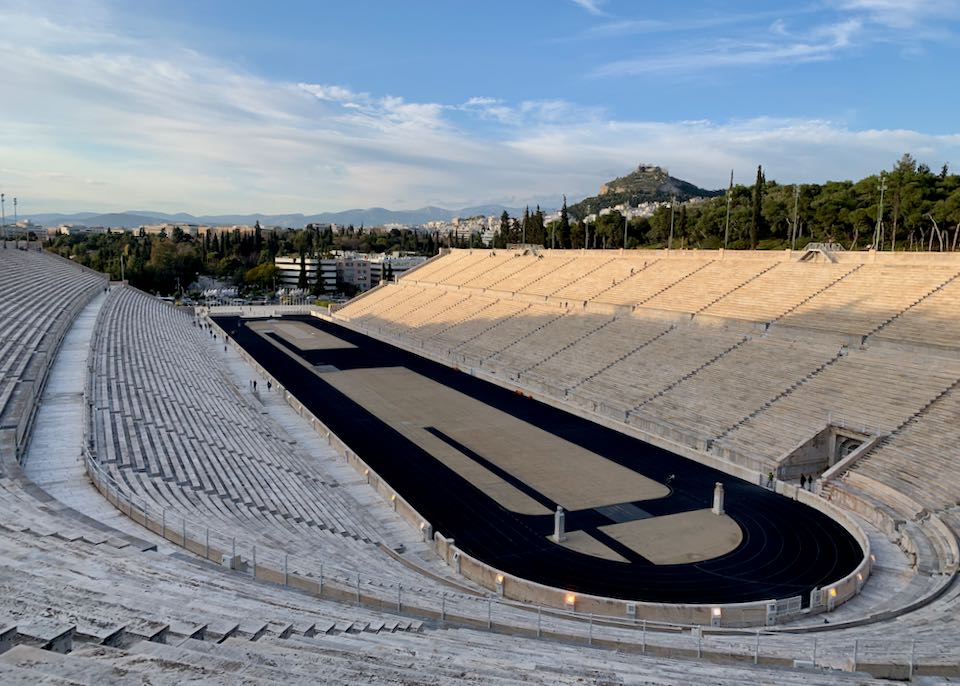
The Panathenaic Stadium in Athens was the site of the first modern Olympic Games, and is the world’s only stadium made entirely of marble.
Tours and Tickets:
• Tickets are are only available for purchase at the stadium, not online.
• Small Group Olympic Games Workout (2 hours)
• Athens City Tour with Entry Tickets (5 hours)
• Athens Small Group E-Bike Tour (2.5 hours; passes stadium, no entry.)Panathenaic Stadium Hours and Information
- Hours: Open daily. 8am to 7pm March to October; 8am to 5pm November to February.
- Website: panathenaicstadium.gr
- Location: Vasileos Konstantinou Avenue
- Telephone: +30 21 0752 2984
- Admission Fee: General admission fee: 10€. Reduced fee: 5€ for seniors over 65 and students. Free admission for children under 6 and for visitors with disabilities and persons accompanying them. – Audiobooks are available in 11 languages and included in the admission fee. Ask for this option at the entrance.
- Parking: Street parking, nearby pay lots.
- Nearest Metro: Syntagma or Evangelismos, both about 1km away.
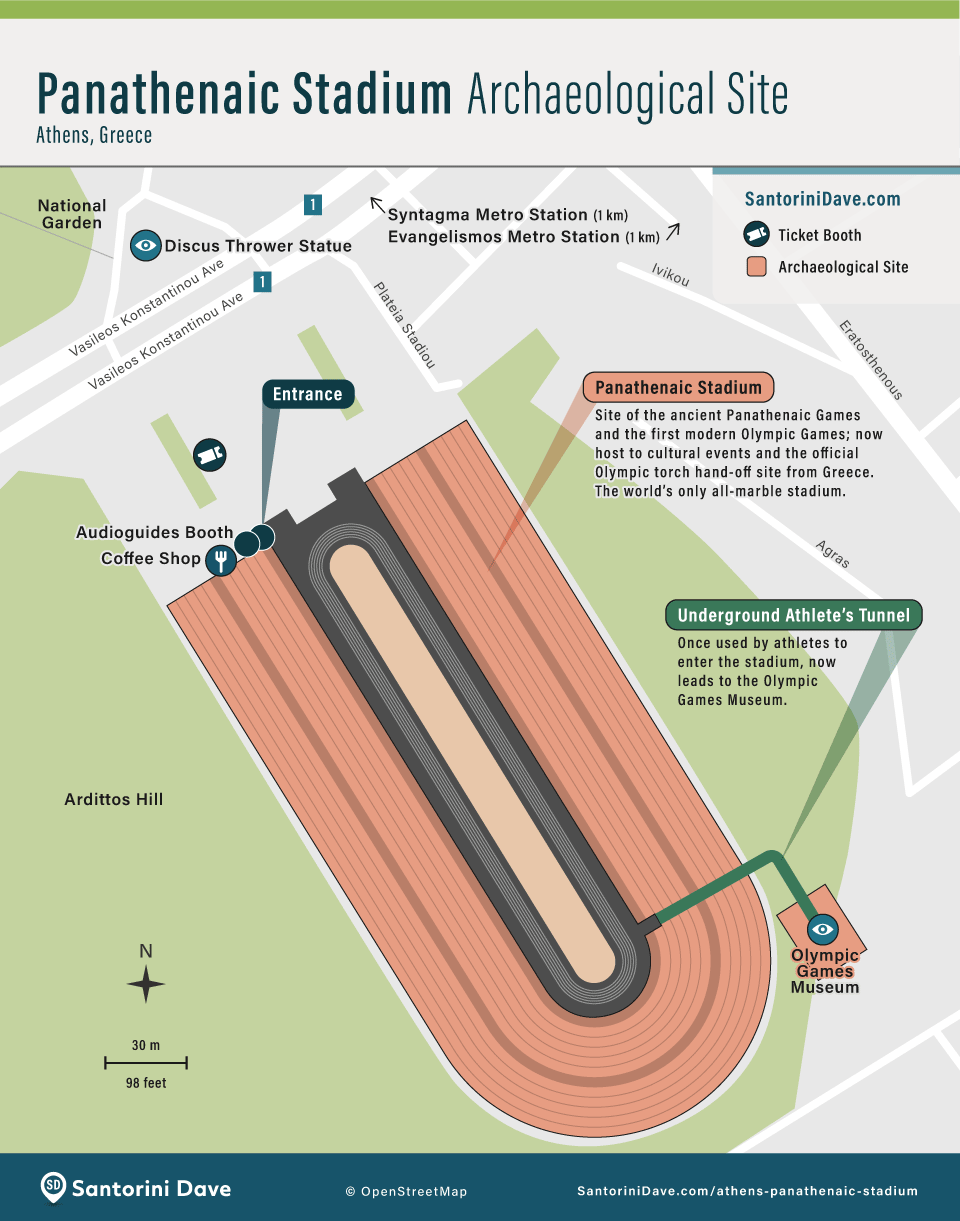
Panathenaic Stadium in Athens
- The Panathenaic Stadium in Athens was the site of the first modern Olympic Games, held in 1896, and the only stadium in the world built entirely out of marble. The top rows of the stadium (especially the upper tier of stand 21) enjoy impressive views of Mt. Lycabettus and the Acropolis.
- Also known as Kallimarmaro (meaning “beautifully marbled”), the stadium is located in the central Athens district of Pangrati, about a 750-meter walk from the Temple of Olympian Zeus and about a 1km walk from Syntagma Square or the Acropolis Museum.
- The original stadium was built in 330 BC by an Athenian statesman, Lykourgos, for the Panathenaic Games which were held every 4 years in honor of the goddess Athena. In 144 AD, Herodes Atticus, an Athenian aristocrat and Greco-Roman politician, rebuilt the original stadium out of Pentelic marble (from Mount Penteli, northeast of Athens) with a massive capacity of 50,000.
- In the 4th century, after the rise of Christianity, the stadium was mostly abandoned and the area was covered by a wheat field until excavation began in 1869.
- It is the finish point for the annual Athens Classic Marathon, which originated in 490 BC when an Ancient Greek messenger ran from the Battle of Marathon to Athens to announce Greece’s victory against the Persians.
- The stadium holds regular concerts in the summer and is host to significant cultural, sporting, and ceremonial events. During an Olympic Games year, the Olympic flame travels from Ancient Olympia throughout Greece before finally arriving to the Panathenaic Stadium for the official hand-over ceremony to the new host country.
- Daily runs are held every morning from 7:30am to 9:00am. Signed safety waivers (provided on site by stadium staff) are required.
- A small coffee shop is open daily at the front of the stadium.
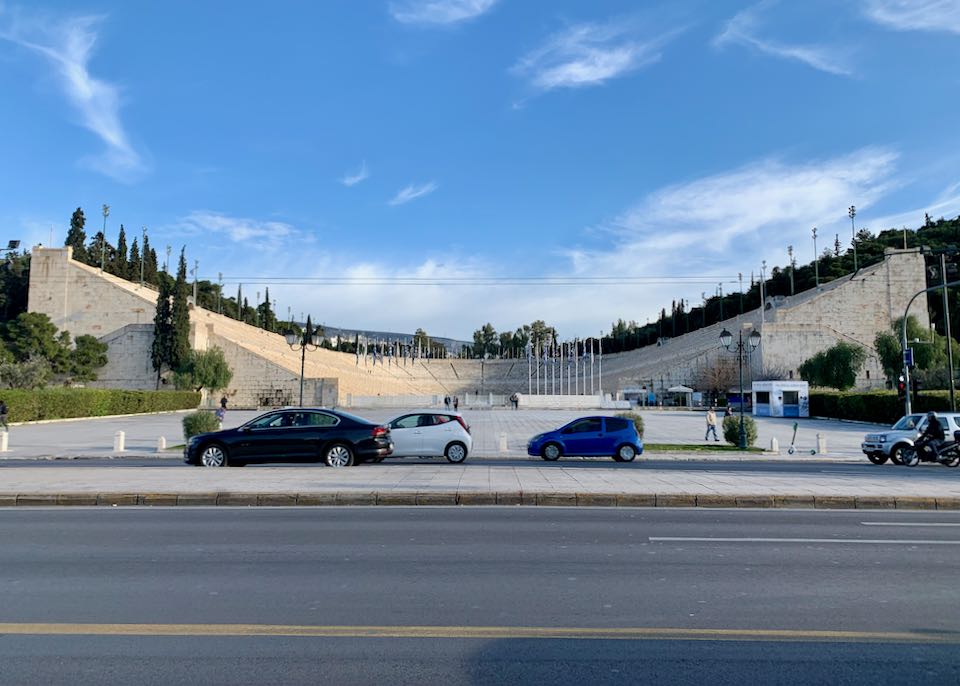
The Panathenaic Stadium in Athens is located on busy Vasileos Konstantinou Avenue, across from the National Garden and not far from the Temple of Olympian Zeus.
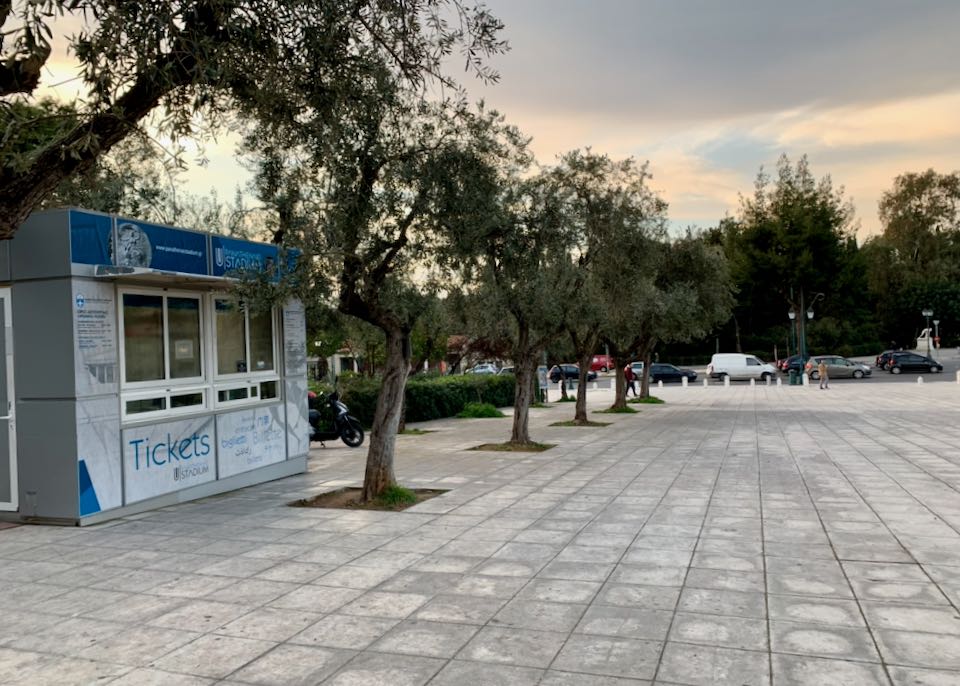
The ticket booth is located on the right side of the stadium plaza. Tickets are available for purchase by cash or credit card, and are not available online.
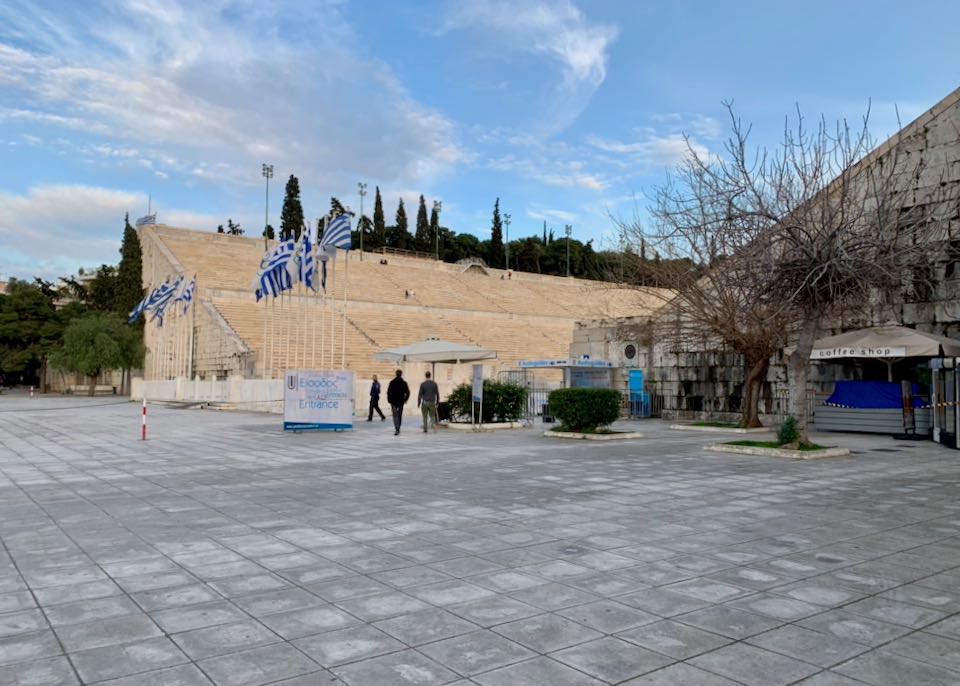
The stadium entrance is at the center of the plaza. There is a small coffee shop outside that’s open most days.
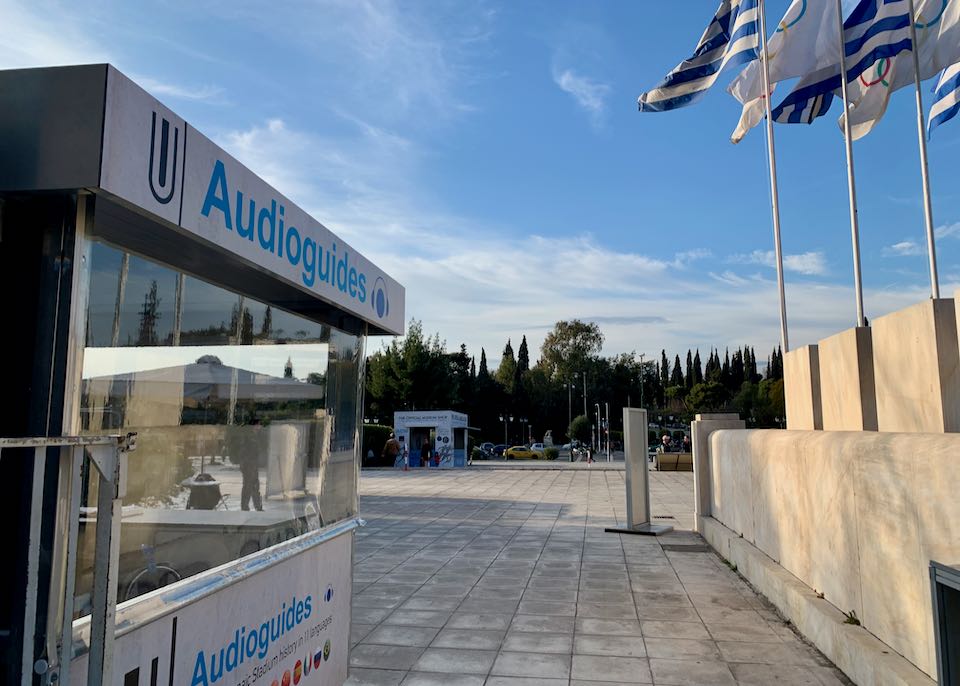
Audioguides are available at a booth as you enter the stadium. They are included in the ticket price.
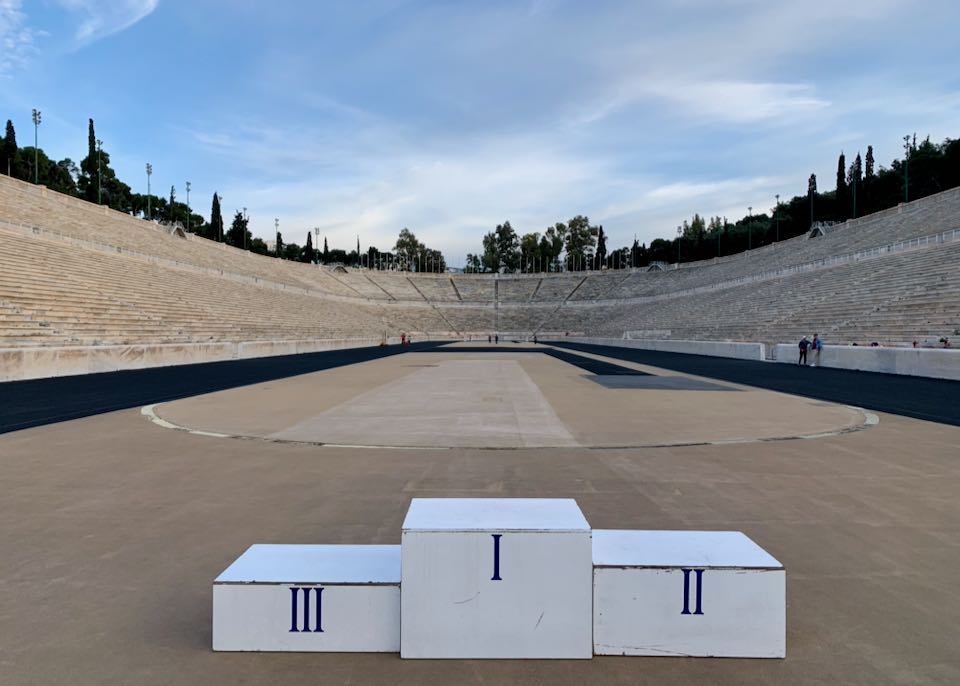
The Panathenaic Stadium was first constructed in 330 BC for the Panathenaic Games, held every 4 years in honor of the goddess Athena. It was also the site of the first modern Olympic Games, in 1896. Modern-day visitors can have their photos taken on the winners’ podium.
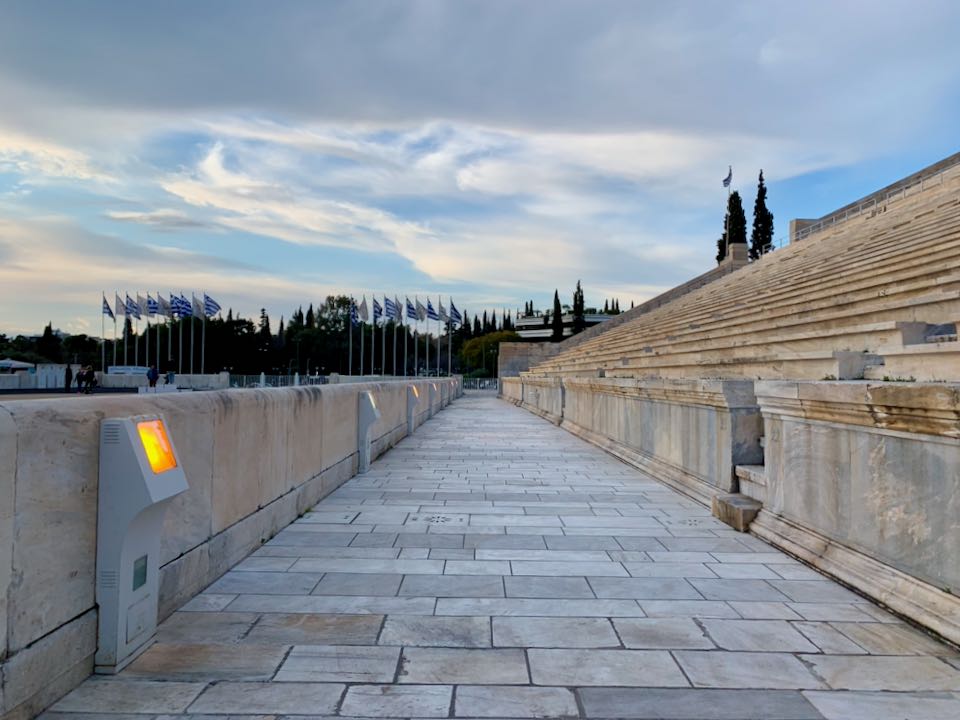
It is the only stadium in the world made entirely of marble, which is sourced from Mount Penteli, northeast of Athens. The marble stands can be quite hot in the summer and slippery in the winter rain, and the stairs are very steep. Wear good shoes and take care not to slip.
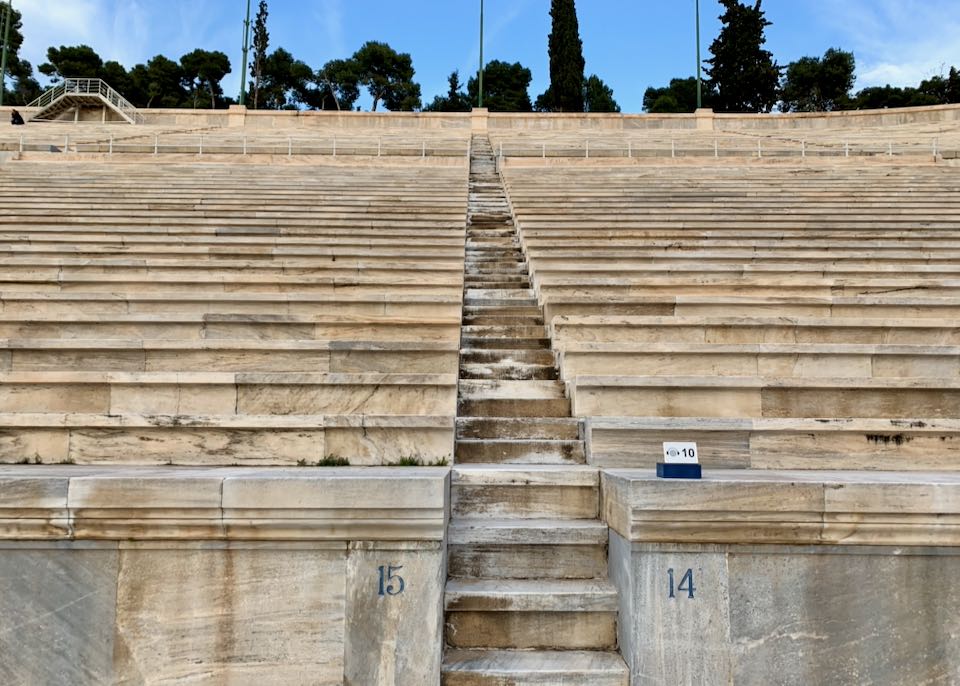
Visitors to the stadium have full access to the track, the stands, the vaulted underground passageway, and the small but interesting Olympic Games Museum.
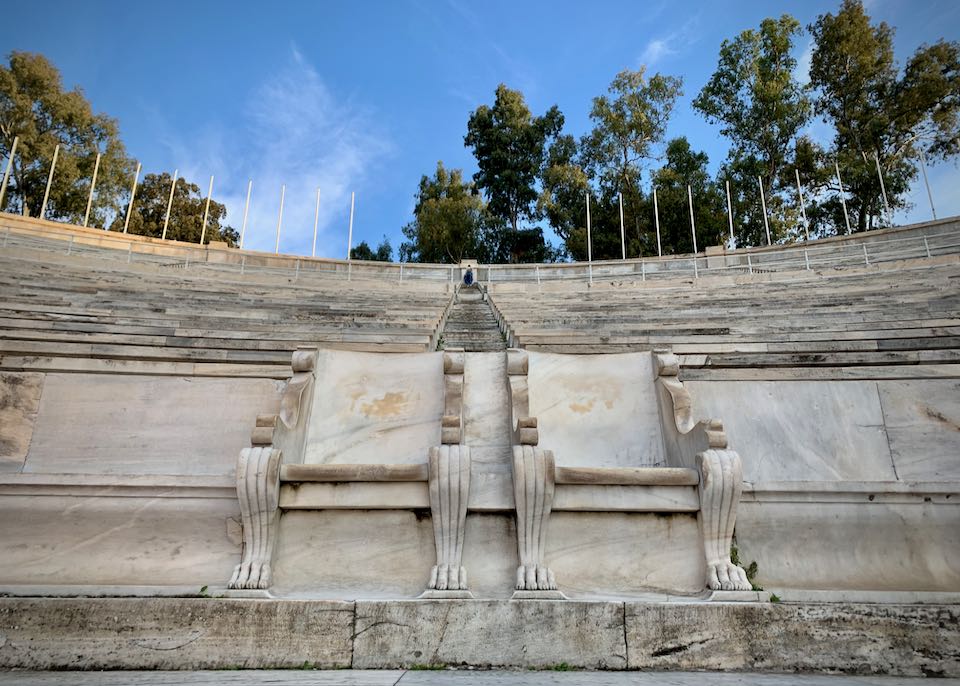
Royal box seating used in the 1896 Olympic Games.
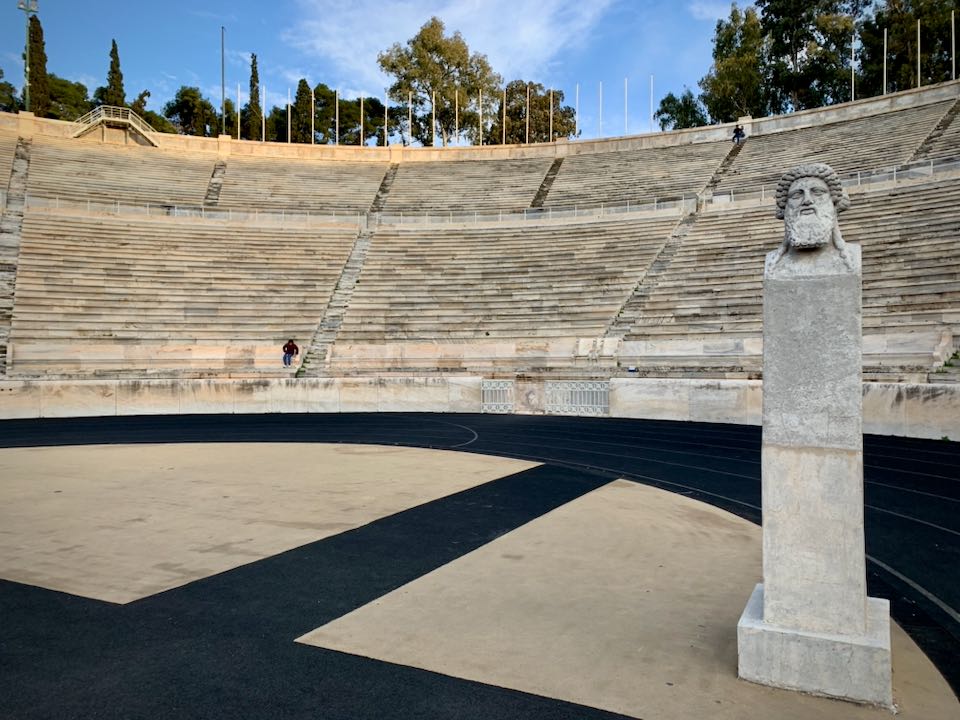
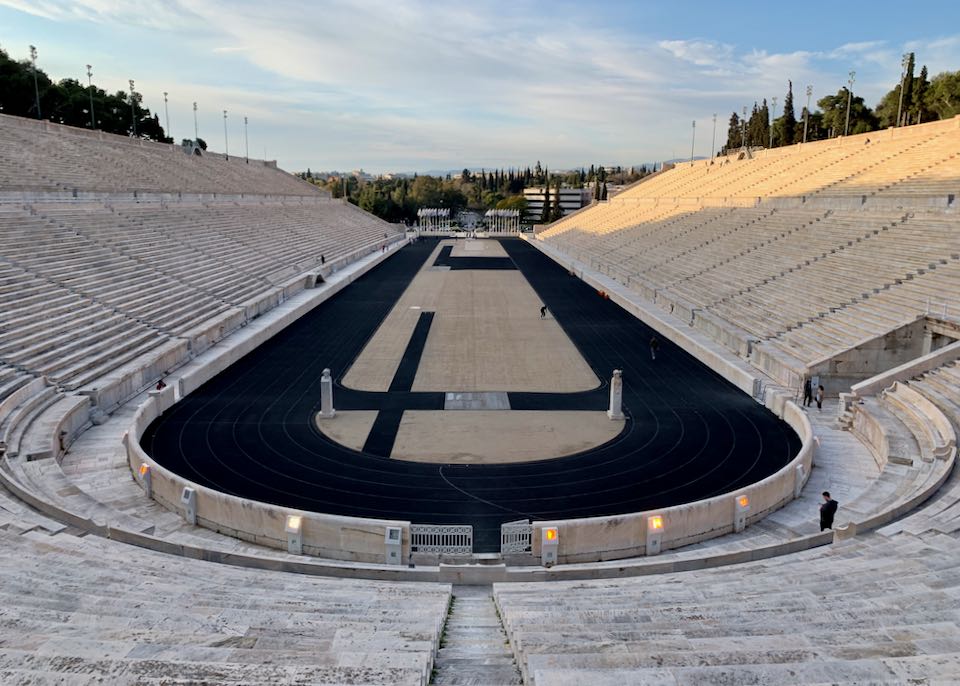
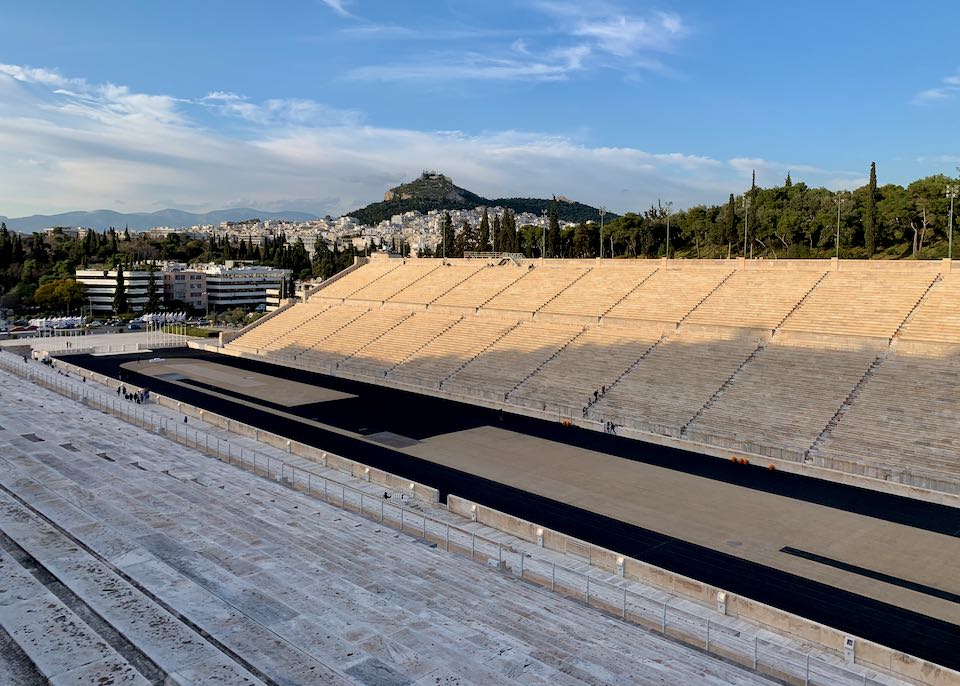
There are excellent views from the top tier of stands.
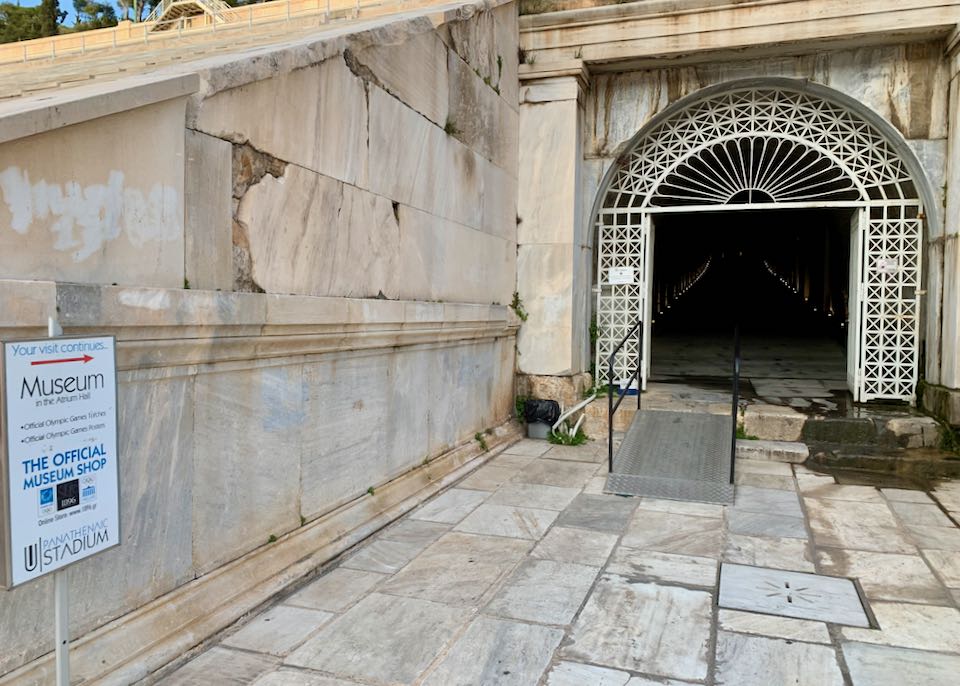
On the eastern side of the stadium, visitors can enter the vaulted underground passageway once used by athletes to enter the games.
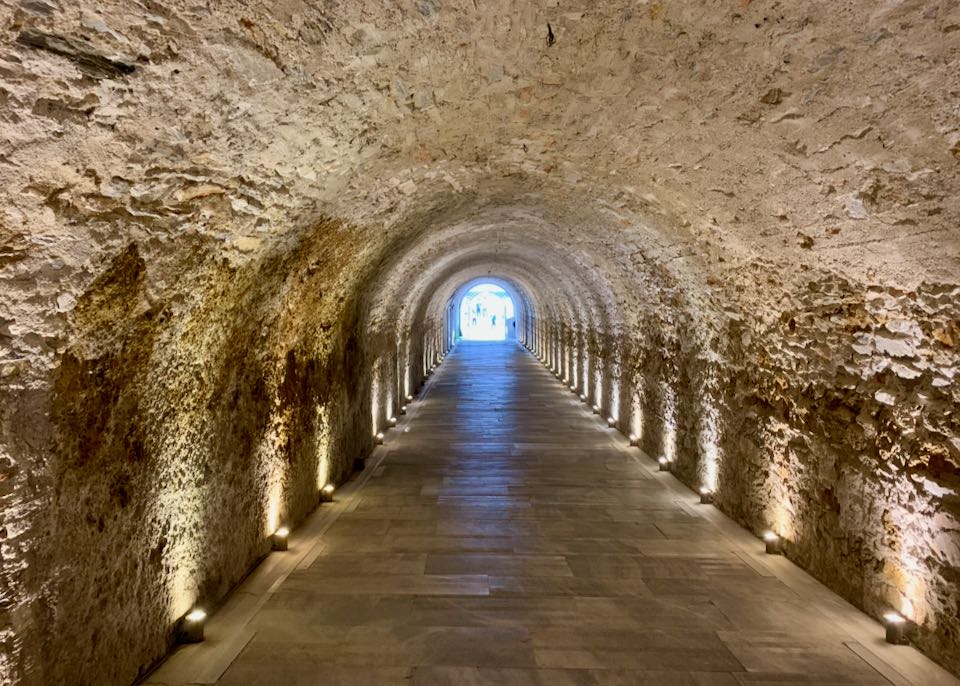
Inside the tunnel, looking back toward the field.
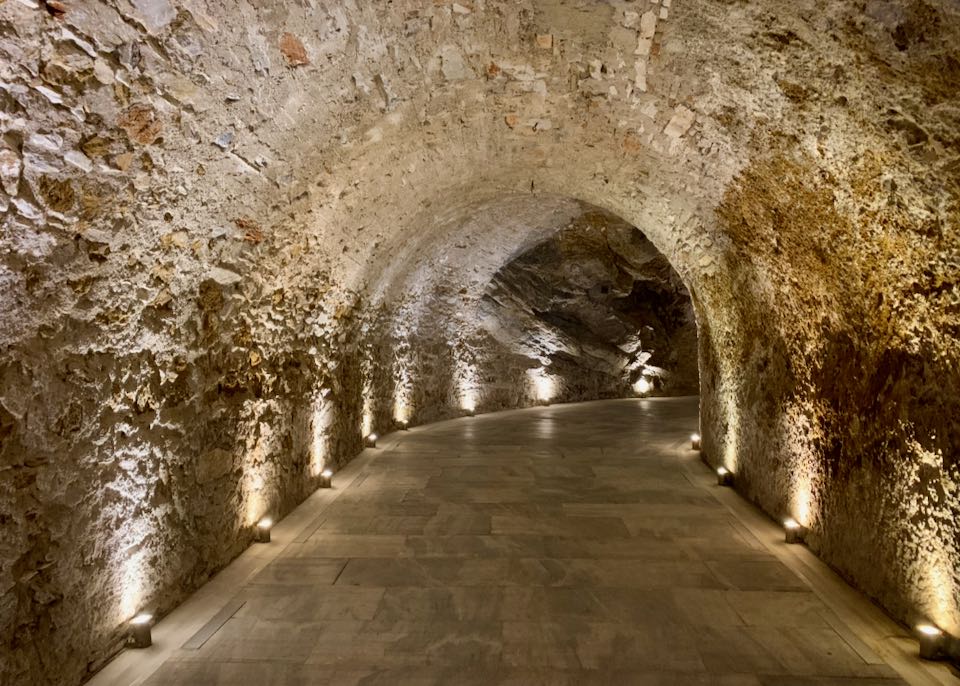
Throughout the stadium’s multiple reconstructions over many centuries, this passageway is the only original part of the ancient stadium that has been preserved to this day.
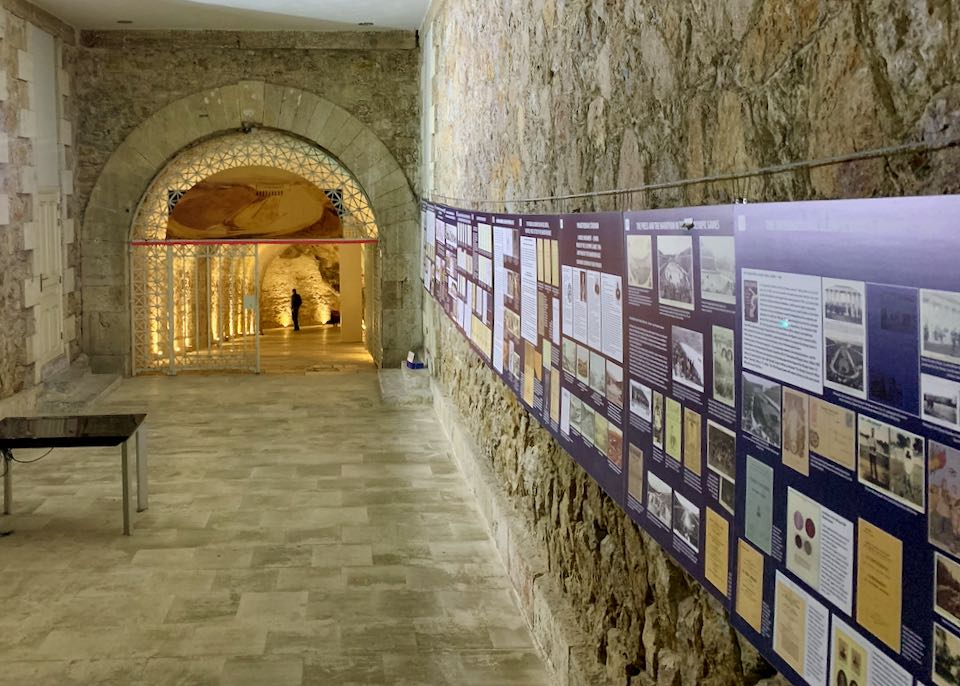
Today, the tunnel leads to the Olympic Games Museum, which explores the history of the stadium and the Olympic Games using photos and memorabilia.
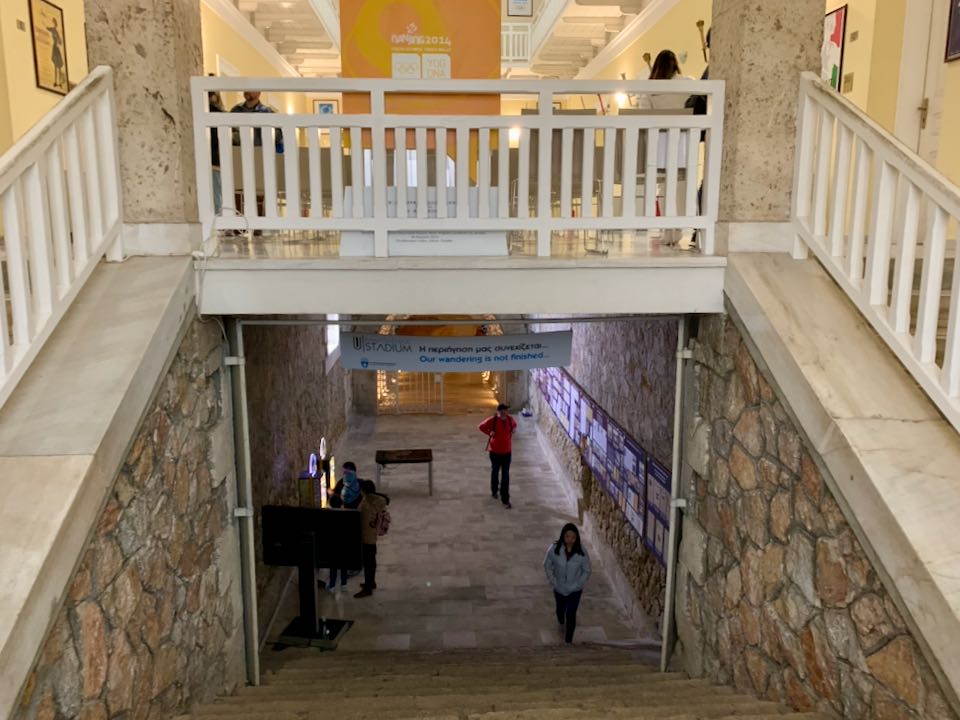
Stairs lead up from the passageway to the museum building.
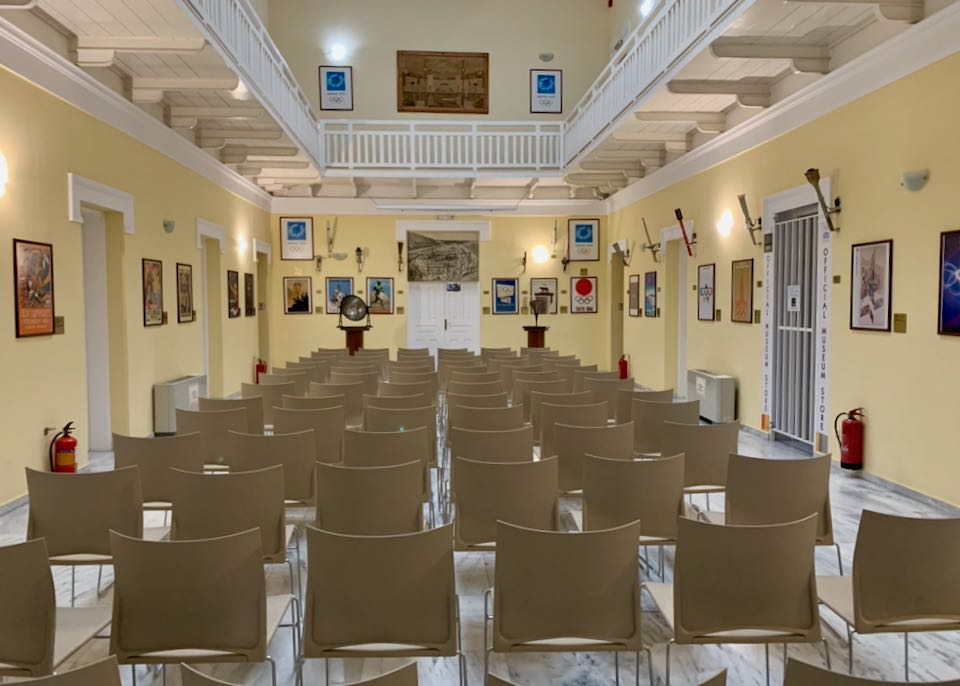
In the main building, visitors can see Olympic posters and torches that have been used over the years.
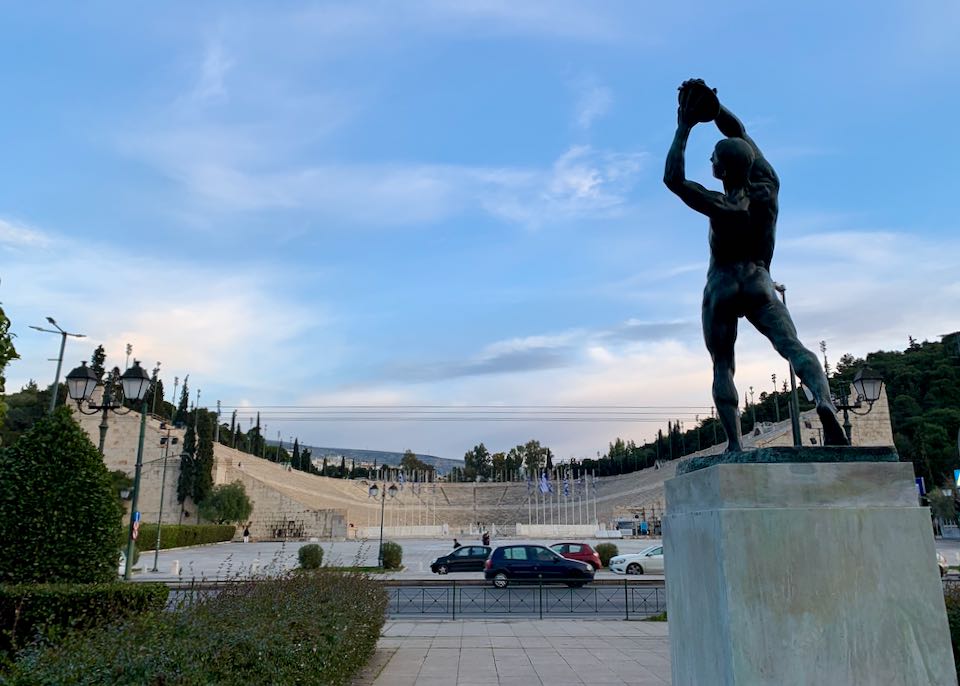
Across the street from the stadium, don’t miss Konstantinos Dimitriadis’ impressive bronze Discus Thrower statue, winner of the gold medal for sculpture at the 1924 Olympic Games in Paris.
Read More
About Santorini Dave